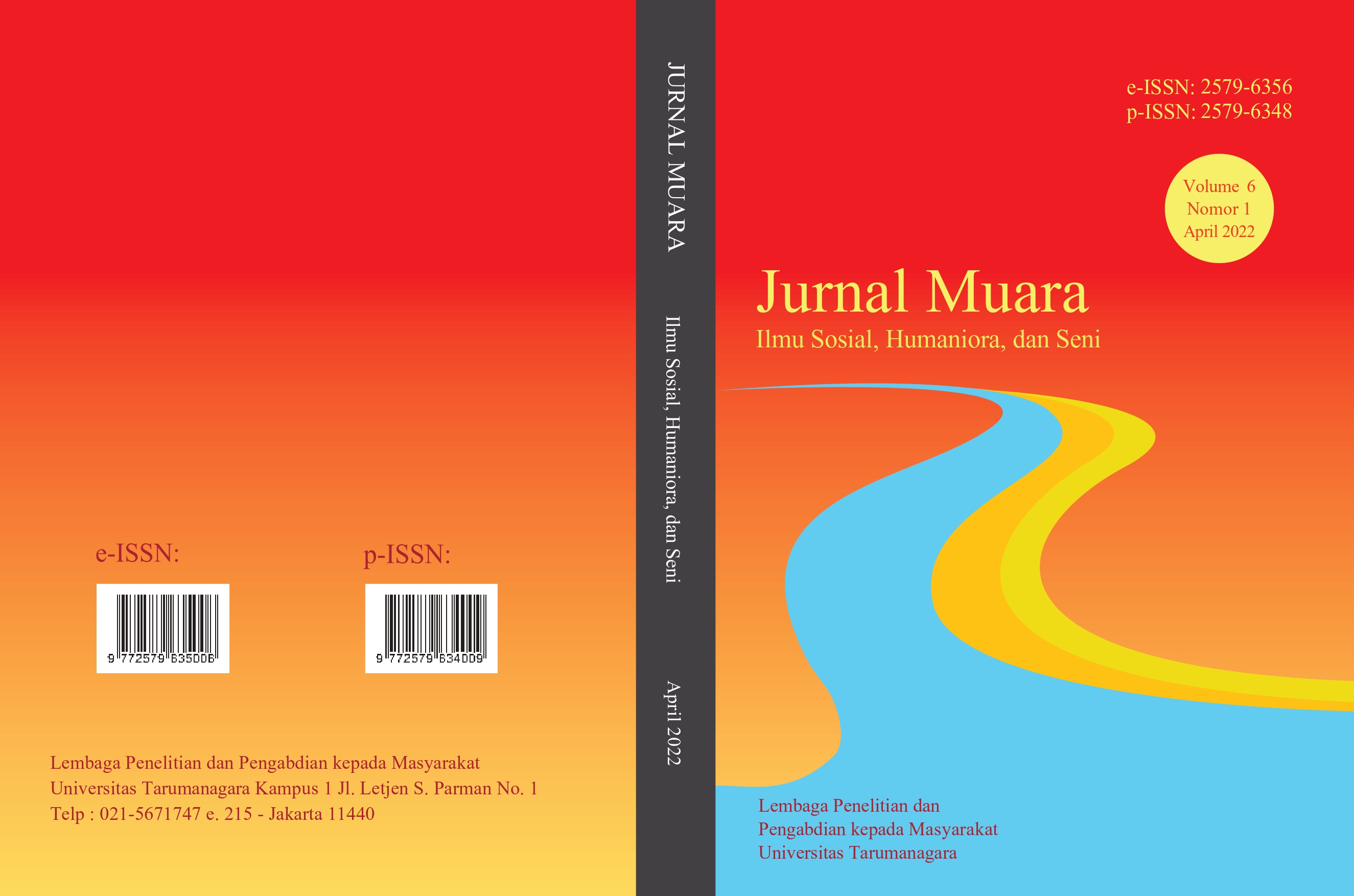HUBUNGAN IDENTITAS NASIONAL DENGAN POLA AKULTURASI REMAJA ETNIS TIONGHOA DI JAKARTA
Main Article Content
Abstract
Ethnic Chinese are one of the minority groups in Indonesia who often receive discriminatory treatment. However, despite receiving continuous discrimination, the Chinese still "survive" and acculturate with other ethnic groups. The acculturation pattern has four categories (a) integration (sense of belonging to the original culture and current culture is high); (b) assimilation (sense of belonging to low native culture and high current culture); (c) separation (sense of belonging to high native culture and low current culture); (d) marginalization (sense of belonging to the original culture and current culture are all low) (Berry & Hou, 2016). This study aims to highlight the pattern of Chinese ethnic acculturation in Jakarta. The research method used is correlational quantitative method. The subjects are students at one of the universities in Jakarta, with the selection of samples using a convenience sampling technique. Data was collected using Google forms with 15-20 minutes to complete. Subjects who recognized themselves as ethnic Chinese totaled 115 people out of 277 submitted answers. The results of the study show that the national identity of all participants has a high value, meaning that the participants of this study have a national identity that does not need to be doubted. This can also be seen from each dimension that supports the national identity variable, as well as the acculturation variable which tends to be high in value. In the grouping of acculturation patterns, the most chosen is integration, which means that participants value the new culture highly, in this case, Indonesian culture and also highly value the original culture, in this case, the Chinese ethnic culture.
Article Details
References
Adam, E. (2012). indentity and education: Negotiating differences between the expectation of Chinese Indonesian and National eduation policies. University of Hawai’i.
Berry, J. W., & Hou, F. (2016). Immigrant acculturation and wellbeing in Canada. Canadian Psychology, 57(4), 254–264. https://doi.org/10.1037/cap0000064
Burhan, O. K., & Sani, J. (2014). Prasangka Terhadap Etnis Tionghoa Di Kota Medan: Peran Identitas Nasional Dan Persepsi Ancaman. Psikologia: Jurnal Pemikiran Dan Penelitian Psikologi, 8(1), 25–33. https://doi.org/10.32734/psikologia.v8i1.6599
Chong, W. L. (2015). Local politics and Chinese Indonesian business in post-suharto era. Southeast Asian Studies, 4(3), 487–532. https://doi.org/10.20495/seas.4.3_487
Christian, S. A. (2017). Identitas budaya orang Tionghoa Indonesia. Jurnal Cakrawala Mandarin, 1(1), 11. https://doi.org/10.36279/apsmi.v1i1.11
Dawis, A. (2012). Orang Indonesia Tionghoa: Mencari Identitas. Gramedia Pustaka Utama.
Dieleman, M., Koning, J., & (editor), P. P. (2011). Chinese Indonesians and Regime Change. In M. Dieleman, J. Koning, & P. P. (editor) (Eds.), Brill. Brill. https://doi.org/10.1163/ej.9789004191211.i-232
Ezmieralda, M. (2017). Representasi Warga Tionghoa dan Kecinaan dalam Media Kontemporer Indonesia. Jurnal Komunikasi Indonesia, 2(1), 15–22. https://doi.org/10.7454/jki.v2i1.7826
Fittrya, L., & Purwaningsih, S. M. (2013). Tionghoa dalam diskriminasi orde baru tahun 1967-2000. AVATARA, e-Journal Pendidikan SejaraH, 1(2), 159–166.
?naç, H., & U?nal, F. (2013). The construction of national identity in modern times: Theoretical perspective. International Journal of Humanities and Social Science, 3(11), 223–232.
Juditha, C. (2015). Stereotip dan Prasangka dalam Konfl ik Etnis Tionghoa dan Bugis Makassar. Jurnal ILMU KOMUNIKASI, 12(1), 87–104. https://doi.org/10.24002/jik.v12i1.445
Kiang, L., Witkow, M. R., & Thompson, T. L. (2016). Model minority stereotyping, perceived discrimination, and adjustment among adolescents from Asian American backgrounds. Journal of Youth and Adolescence, 45(7), 1366–1379. https://doi.org/10.1007/s10964-015-0336-7
Romli, K. (2015). Acculturation and assimilation in the context of intereEthnic interaction. Ijtimaiyya, 8(1), 1–13.
Ryder, A. G., Alden, L. E., Paulhus, D. L., & Dere, J. (2013). Does acculturation predict interpersonal adjustment? It depends on who you talk to. International Journal of Intercultural Relations, 37(4), 502–506. https://doi.org/10.1016/j.ijintrel.2013.02.002
Trinugraha, Y. H. (2013). Politik identitas anak muda minoritas: Ekspresi identitas anak muda Tionghoa melalui dua organisasi anak muda Tionghoa di Surakarta. Jurnal Studi Pemuda, 2(2), 172–186.
Vélez-Agosto, N. M., Soto-Crespo, J. G., Vizcarrondo-Oppenheimer, M., Vega-Molina, S., & García Coll, C. (2017). Bronfenbrenner’s bioecological theory revision: Moving culture rfom the macro Into the micro. Perspectives on Psychological Science, 12(5), 900–910. https://doi.org/10.1177/1745691617704397



